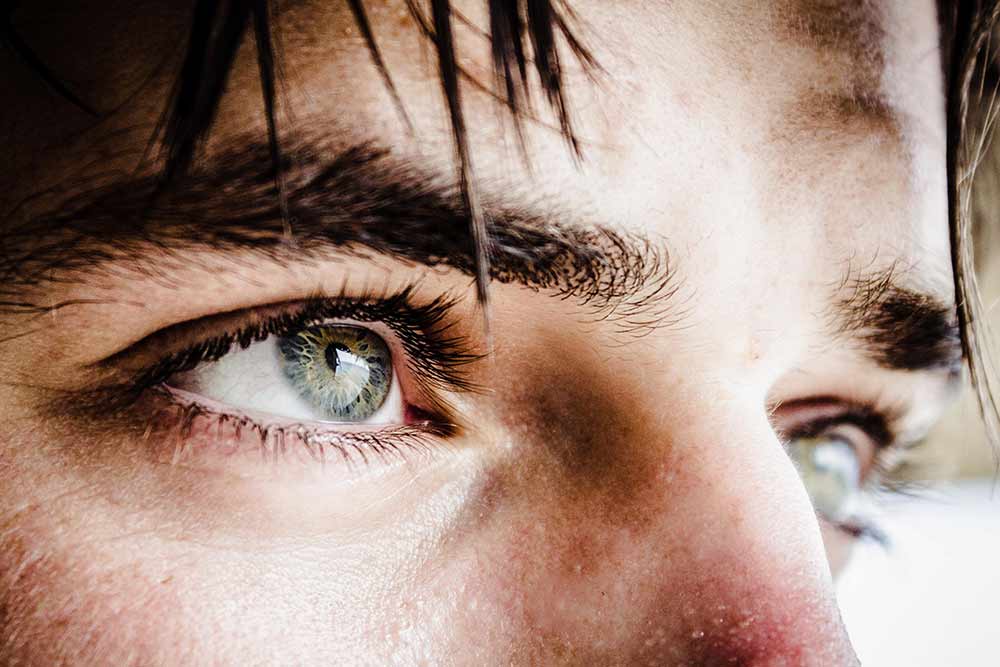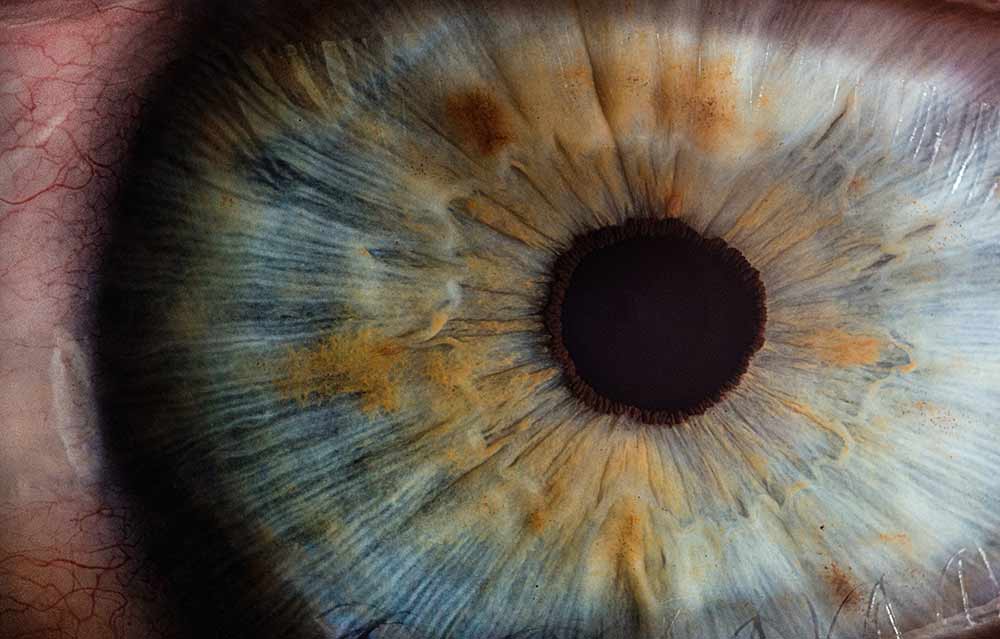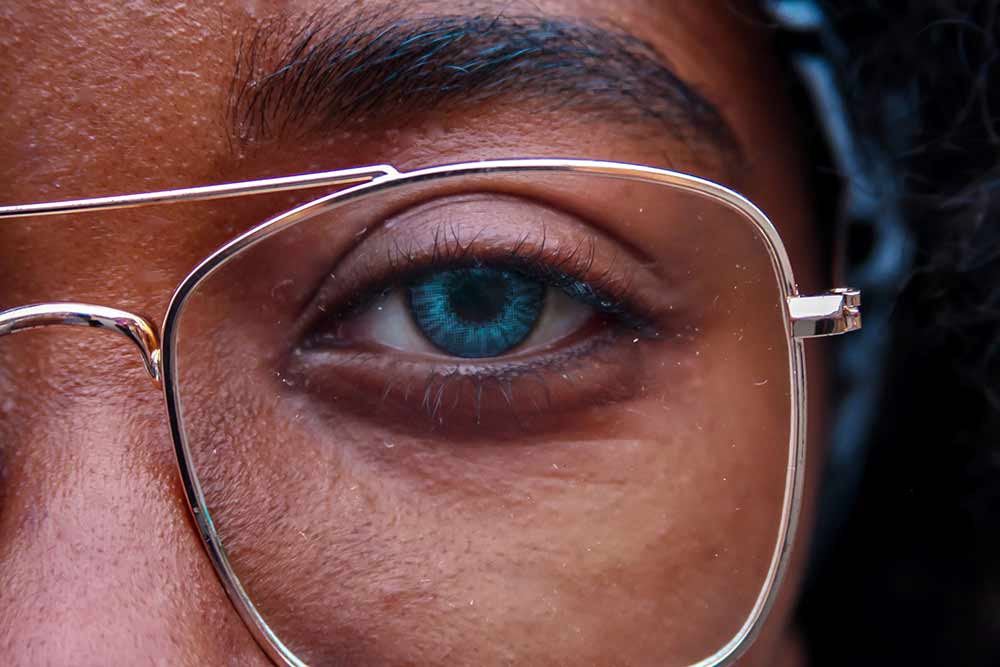Glaucoma Corneal Neuropathic Pain | Retinopathy | Conjunctivitis | Balperitis – eyelid inflammation | Episcalritis vaskularitis | Grape Inflammation Oncozarakiaziasis | Cataracts | Eye Cancer Retinoblastoma
An eye is a sensing organ that is sensitive to light waves (400-700 nm) and is used for vision. The eye transmits information to the brain about the degree of lighting and colours from the environment, allowing the vision.
The human eye is composed of a lens that centralizes the rays of light on the light-sensitive receptors (Retina), which convert light into an electrical signal transmitted to the brain. Inflammatory diseases of the eye may appear as the first sign of generalized disease in the body or conjugation with other diseases such as joint diseases. These diseases can cause severe damage to the patient’s quality of life and lead to a significant decrease in a visual capacity. The period that passes between the onset of the disease and the full diagnosis and the provision of appropriate treatment is crucial in the patient’s overall functional ability and ability to see.
One of the first indications of medicinal cannabis was for lowering the intraocular pressure (IOP) in glaucoma patients, but it turned out that the relief was only temporary and required smoking cannabis throughout the day.
Marijuana also developed tolerance to the effect of THC and patients had to gradually increase the dose. Today, with the advent of CBD products in eye drops, capsules, and vaping, a new era of eye disease treatment has opened and many anecdotal reports of people trying CBD as self-treatment for lowering intraocular pressure can be found results are encouraging.
It is important to note that in no way should CBD oil for swallowing be taken straight to the eye!!!

Glaucoma – Increase in Intraocular Pressure (IOP)
A group of diseases that damage the optic nerve are usually associated with an increase in intraocular pressure. The common disorder is related to blocking the drainage of the intraocular fluid that is located at the corner of the eye. The interruption in the drainage causes increased intraocular pressure that damages the optic nerve in the area of the fistula and the macula. As a result, the field of vision is slowly reduced to blindness. There are pharmacological and surgical treatments to slow the progression of the disease. The mechanism of damage to the optic nerve in the disease is caused by an equilibrium between the production of intraocular fluid and its drainage. The intraocular fluid is formed in the Ciliary body – one of the three components of the Uvea, which is located in the back chamber of the eye, the liquid is poured directly into the back chamber, passes through the pupil to the front chamber of the eye, is collected by the trabcullum network out of the corner of the eye and drains through the Schlemm canal to the venous drainage system. About 30% of the liquid also drains through another drainage system called the basal system. Each blockage of the canal leads to an increase in intraocular pressure and subsequent damage to the optic nerve characterized by visual disturbances to the point of blindness. More than 60 million people worldwide suffer from glaucoma, most of them over the age of 40.
CBD as a treatment of Glaucoma
During glaucoma disease, a high release of the stimulant nerve messenger – Glutamate (Glu) was found to cause the death of Ganglion cells in the retina. Both cannabinoid THC and CBD lower the release of glutamate from nerve cells in the eye and thus protect the ganglion cells. It also turned out that the neurotransmitter glutamate causes the death of retinal nerve cells due to increased production of the ion peroxynitrite, an unstable structural isomer of nitrate. It has been found that both THC and CBD prevent the formation of the oxidizing peroxynitrite ion, which damages the cells in the eye.
Corneal Neuropathic Pain (CNP)
The cornea is the transparent lid of the retina and inside it is a high concentration of sensory nerve endings. A touch of a foreign object in the corneal stimulates an involuntary reflex to close the eyelid. Retinal injury triggers CNP as the most powerful neuropathic pain. The study found that with the help of endocannabinoids (eCBs) and external {Phyto} (PCBs) the CB1 and CB2 receptors are activated, thereby weakening the sensation of pain. In addition, cannabinoids weaken inflammation and stimulate the release of endorphins. Endorphin binds to MU opioid receptors that soothe the pain. Another study looked at causing physical or chemical damage to the retina when local treatment for CBD-containing eye drops lower the intensity of pain as measured in a decrease in eye blinking. A similar experiment was carried out in rats lacking the CB2 receptor [CB2-Knock-out] and it turned out that cannabidiol lowers pain in these rats. These findings mean that CBD’s pain reduction mechanism is not related to CB2 receptors and probably other receptors or proteins are involved in reducing the pain observed due to CBD treatment.
Effect of sublingual application of cannabinoids on intraocular pressure: A pilot study
Retinopathy
Macular Edema with a background of diabetic Macular Edema Diabetes. An eye disease that is formed as a side effect of diabetes is also known as diabetic retinopathy. The impairment of vision is caused by increased blood flow that generates pressure on the blood vessels in the retina, which begin to secrete fluid that condenses in the centre of the retina until edema is formed. Macular edema damages vision and poses a significant risk of developing blindness. Routine and early diagnosis tests can slow the rate of the disease. Diabetic retinopathy mainly affects “long-established” patients with diabetes – a disease that affects various body systems, including small blood vessels. In the retina of the eye, there are many small blood vessels, which are damaged as a result of the diabetic disease, fluids begin to leak and cause precipitation. Leakage in the centre of the retina (macula) will cause fluid accumulation in the centre of vision and decreased visual acuity. At a more advanced stage, bleeding will be formed inside the eye, and as the disease progresses, the blurring of vision will worsen until a state of full vision loss. Diabetes is the main cause of blindness in the Western world. The high sugar (Glucose) blood levels cause retinal destruction and degeneration in the structure of the blood vessels.
CBD as a treatment of Eye Diseases
The use of natural or synthetic cannabinoids is a major medical challenge because of the high lipophilic profile of cannabinoids, which makes it difficult for cannabis oil to dissolve in water. Oil and water don’t mix well together.
This well-known problem is an important and relevant component in the question of whether CBD is suitable for treating eye problems in the form of drops – since the drop must penetrate the inner layers located in the retina.

Since the mid-1970s, smoking THC-rich cannabis has proven to be beneficial for lowering intraocular pressure (IOP) and reducing symptoms of glaucoma, but the development of cannabinoid-based drops has been delayed due to this fat solubility (lipophilic) nature of cannabinoids. There have been attempts to dwell a minimum percentage of THC in drops of mineral oil and apply them directly into the eye. The drops were found to instantly soothe high ocular pressure, but the side effects of such a tiny dose of THC were burdensome on the eyes and could not be used as an effective treatment. Today, evidence from studies and anecdotal reports shows that treating eye infections and intraocular pressure increase can be done by CBD oil taken through the digestive tract or evaporation facilitates.
Treatment of other Eye Diseases by CBD
Infectious Eye Diseases, Ocular Inflammatory Diseases (OID):
Inflammatory & infectious diseases that involve the eye and surrounding tissues. These diseases include:
Rheumatism:
Infectious disease of the eyes caused by strains A-C of the bacterium Chlamydia traumatic. The Gregorian name “trachoma” – in ancient Greek: not smooth, rough – describes the nuclear-rough appearance of the eyelid in the active stage of the disease. The disease is transmitted in direct contact with secretions from the patients’ eyes, nose, and throat or contact with clothes and towels contaminated with these secretions. The disease is common in countries with poor hygiene conditions.
Conjunctivitis:
Conjunctivitis, known in the speaking tongue as “ophthalmology”, is inflammation of conjunctivitis. The conjunctiva is a transparent membrane that coats the whiteness of the eye and the inside of the eyelids. It is one of the most common eye diseases. It can be caused by a virus, bacteria, allergic reaction to household dust mites, pollen, smoking, volatile substances, or various chemicals. The treatment of the disease if it is from the source of the herpes simplex virus is using the anti-viral drug acyclovir.
Balpertysis – Eyelid Inflammation
Eyelid inflammation is common, often chronic, caused by the poor functioning of tiny fatty glands in the eyelid. The inflammation manifests itself in swelling, itching, pain, and redness of the inflamed area. Often the disease appears in the lash line. Balpertis has several factors that can work together or cause the disease separately. The most common are blockage of fat glands so that bacteria that multiply in them are not excreted, general bacterial infection, and allergy. A dry and dust-rich environment exacerbates the situation, as well as insufficient eye hygiene. The cause of the infection may be viral (e.g. the VZV the virus that causes shingles), fungal (e.g. Malassezia fungi that cause suburbia dermatitis), bacteria (e.g. Staphylococcus), or even parasitic. Sometimes the disease is cured without treatment, especially with strict adherence to eye hygiene, but in most cases, the inflammation worsens and is sometimes accompanied by a festering secretion that obscures vision and/or swelling so much in the eyelid that the condition deteriorates to partial blindness if no appropriate treatment is taken. Except in severe cases where treatment is neglected, there is no long-term damage.
Episcleritis & Eclearitis – inflammatory diseases of the eyewall:
Scleritis is an inflammatory process of the anterior and/or posterior sclera that can sometimes also involve episclera, cornea, Oba, or optic nerve. Up to 50% of patients with scleritis have evidence of systemic disease. The diagnosis of the disease is based on the patient’s anamnesis, typical findings in the eye examination, and imaging tests. Episcleritis usually appears in young women or midlife, but can appear at all ages. There is no specific cause for its appearance, but it can be linked to many systemic diseases, especially joint diseases and autoimmune diseases. Patients with episcleritis complain of a sudden appearance of redness and irritation. It usually appears in one eye. If redness appears in both, this indicates a latent systemic disease. Episcleritis does not endanger vision, and it is a disease that appears and passes by itself.
The difference between scleritis and episcleritis:
It is sometimes difficult to differentiate between scleritis and episcleritis, and the diagnosis between these two conditions requires anamnesis and careful examination to find the layers involved in the inflammatory process.
Episcleritis is idiopathic in most cases, compared to scleritis in which it is possible to find the involvement of systemic disease in up to 50% of cases.
In episcleritis, the inflammatory process is easy and focused on the superficial episcleral tissue, usually without the involvement of other ocular tissues.
The patient’s main complaint is redness and discomfort in the eye, unlike scleritis, in which the main complaint will be pain and sensitivity to the touch of the eyeball.

Uveitis:
a general name for a disease that involves one of the grape parts (obea). The grape is the inner part of the eye, which is located between the whiteness of the eye (sclera) and the retina, and consists of the iris (eye colour), the celiarcary body (muscle behind the iris that can contract), and the imaging layer (choroid – the layer that supports the retina).
There are three main types of uveitis inflammation: Front, middle, and back. Uveitis inflammation may appear as an independent eye disease, or as a secondary disease that serves as a sign of another general disease. Usually, it’s an inflammatory disease. However, when it is a sign of another disease, its symptoms may appear without the occurrence of inflammation. A variety of tests allow the diagnosis of the disease, including eye imaging and irritated sepsis, since the grape infection can cause vision loss, it is very important to diagnose and treat the disease early.
River blindness – Onchocerciasis:
A disease caused by parasitic worms of the type Onchocerciasis volvulus and causes blindness. The worms penetrate through the skin and sit behind the eyes. The worms are transmitted by the bite of an insect. The disease was most common in West Africa.
Cataracts
Cataracts are a disease of the eye that manifests itself in the turbidity of the eye lens. The disease is one of the main causes of decreased vision in the Western world and the main cause of blindness in developing countries.
Eye Cancers
A term that describes different types of tumours that occur in different parts of the eye. This cancer occurs when cells begin to grow uncontrolled and form a mass called a tumour. The tumours are divided into two types: a benign tumour (not cancerous) or a malignant tumour (cancerous, can metastasize to different parts of the body). The two common types of cancers that spread through metastases to the eye are breast and lung cancer.
There are several types of eye cancer: Oval melanoma (common among the different types), intraocular lymphoma, retinoblastoma (rare cancer in children’s eyes), conjunctival melanoma, eyelid carcinoma, and tumour of the sacrificial gland.
Retinoblastoma
Cancer of retinal cells (retina) usually appears in children under the age of 5. In the Western world, it is one of the crabs with the highest rates of cure (about 95%). There are two types of the disease: retinoblastoma resulting from an inherited defect and non-hereditary retinoblastoma. In the genetic type, you distinguish between heritage retinoblastoma (when there is a history of the disease in the family) and sporadic retinoblastoma (when the disease appears without a family background). In two-thirds of cases, only one eye is affected (uni-trial retinoblastoma) and in the remaining third, tumours develop in both eyes (bi-trollal retinoblastoma). The number and size of tumours vary from patient to patient.
Location, size, and the number of tumours are taken into account when choosing the type of treatment for the disease. A mutation in the RB1 gene on chromosome no. 13 is the cause of retinoblastoma. The genetic code found in chromosomes dictates to the cell the types of proteins it must produce and the level of expression in the cell. Damage to this gene will cause damage to the protein that binds the tying factor, E2F. The protein that binds E2F prevents it from binding with DNA and replicating genes associated with cell share. Damage to this protein causes a lack of control over the titling process and eventually manifests itself in a cancerous tumour.
Sclera = Eye Whiteness: This is the outermost layer of the eyeball that acts as a kind of shell of the organ.
Cornea: It is a thin transparent tissue built from five known layers. Its function is to break and collect the rays of light that enter the eye so that they are focused by the lens and fall on the retina perfectly.
Iris: Iris is behind the cornea. The iris is a ring of muscles, and at the centre of it is the pupil hole. The role of the iris is to control the amount of light that enters the eye.
Pupil: As mentioned above, the pupil of the eye is a hole in the centre of the iris that allows light to pass towards the retina through the lens.
Lens: The lens is located behind the iris and pupil. The lens of the eye is a biconvex, relatively acellular, optically transparent intraocular structure that with the cornea serves to transmit light to the retina with minimal light scattering. It can change its thickness by the ciliary muscles, thereby altering the level of entry of the rays of light.
Vitreous Humor / vitreous body: A transparent, water-based clotting material that fills the space between the lens and the retina (the posterior region) and is designed to protect sensitive light cells from direct contact with the environment.
Retina: The retina is located in the deepest part of the eye. On it occurs the conversion of light waves into electrical currents transmitted to the brain.
Optic Nerve: The axon collection of retinal ganglion cells drains concentrated through the optical disc area (blind spot) and then continues to a lateral nucleus in the brain.
The ciliary body is found in the lens’s circumference, containing the ciliary muscle which causes the lens to move – to direct the focus. In addition, the ciliary body is responsible for producing the aqueous humour liquid that nourishes the lens and cornea.
The aqueous humour is a transparent water-like fluid similar to plasma, but containing low protein concentrations. It is secreted from the ciliary body, a structure supporting the lens of the eyeball. It fills both the anterior and the posterior chambers of the eye and is not to be confused with the humour, which is located in the space between the lens and the retina, also known as the posterior cavity or vitreous chamber. Blood cannot normally enter the eyeball.
Want to experiment with quality CBD products?
MOYA recommends several products suitable for treating a variety of problems, it is worth taking a look at the store and learning our many products. For free advice and to select the right product for you – contact us


